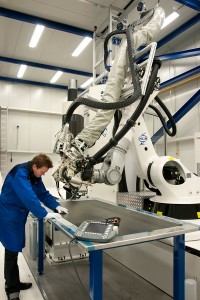 Recently, the National Aerospace Laboratory of the Netherlands (NLR) and Dutch SMEs Airborne and Polyworx decided to  cooperate intensively with each other over the coming three years with a view to substantially improving the price/performance ratio of composite products.
Recently, the National Aerospace Laboratory of the Netherlands (NLR) and Dutch SMEs Airborne and Polyworx decided to  cooperate intensively with each other over the coming three years with a view to substantially improving the price/performance ratio of composite products.
The use of high-quality composite materials (fibre-reinforced resin) has increased significantly in recent years. These composites were initially used mainly in the aviation sector, because they made planes and helicopters lighter. There is now growing interest in these materials in other market segments, such as the automotive, medical, maritime and transport sectors. But the price/performance ratio of composite products needs to be greatly improved before they can break through in other sectors. This is the primary goal of a European project called ECOMISE (Enabling Next Generation Composite Manufacturing by In-Situ Structural Evaluation and Process Adjustment) in which 11 companies from 6 European countries are participating.
A frequently-used method of manufacturing composites involves stacking dry fibres on top of each other. After the fibres have been placed in a jig, they are injected with a resin system. The fibre directions, the quality of injection (matters such as air bells) and the hardening of the resin determine the quality of the product to a large extent. Contamination like remnants of auxiliary materials and accumulations of dust are obviously not allowed. An excessive variation in the fibre direction or resin quality or an abundance of contamination will result in rejection of the product, an issue that usually comes to light only at the final inspection of the product.
The rejection rate will be minimised if such deficiencies can be detected and rectified during the actual production process. An extra advantage is the great enhancement in the quality of the material, which creates the potential to make the products even lighter and thus cheaper. The bottom line is better, lighter and cheaper composite products.
In this project the dry fibres will be stacked on each other using automated and robot-supported methods like pick-and-place and fibre placement. The resin injection will also be an automated process. Special sensors will be used to detect variances, so as to adjust the process automatically by means of new software. This system is going to be developed, built and tested as part of the project and this may set a new standard for the next generation of composite


